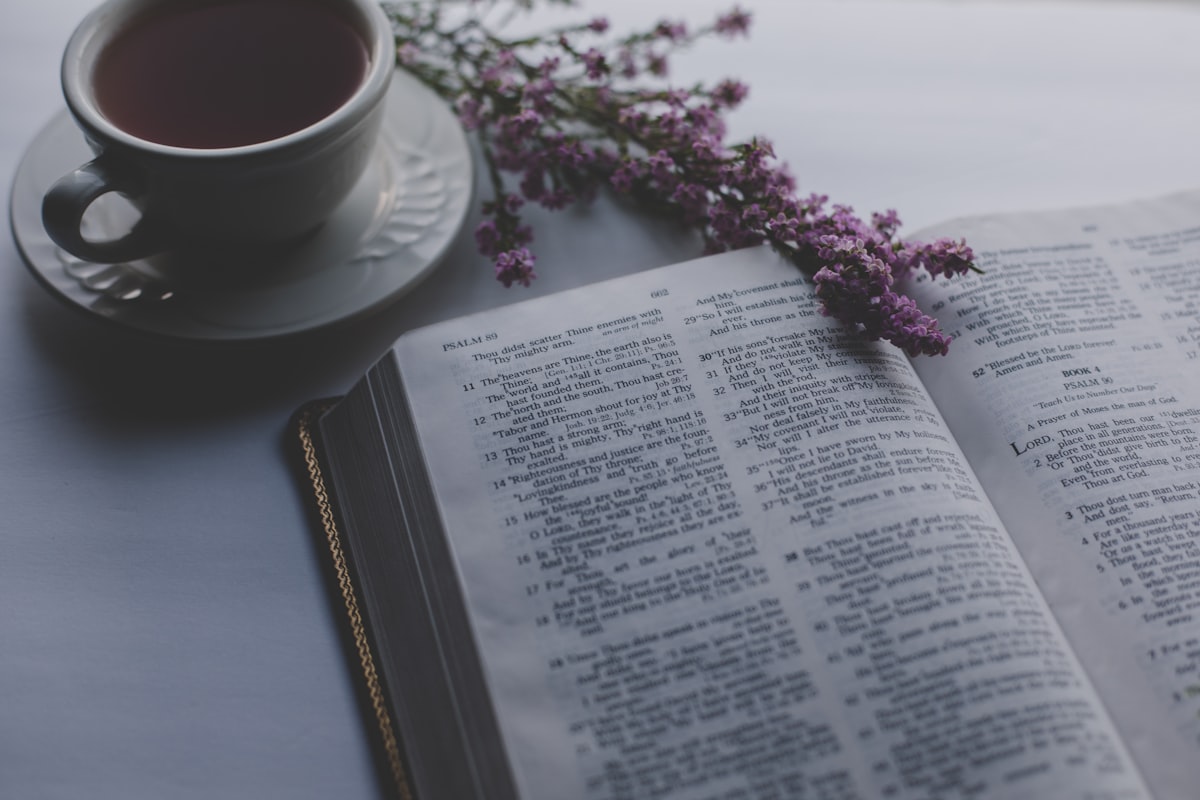Introduction to the Book of Psalms
This article covers several topics on the book of Psalms: purpose, questions to ask when reading, genre, origin of composition, and content.

Originally posted in English at AofR and in French at TPSG.
Why the Book of Psalms?
Over the past few years, I have developed a fascination with the book of Psalms. A Charles Simeon Trust online course on poetic literature whetted my appetite for this biblical genre, as did a recent in-person course on how to preach the Psalms. In the past two years, the Lord has brought a team of gifted women Bible teachers into my life, whom I have had the joy of coaching as we teach through books of the Bible together. This year, I am hoping to teach from the book of Psalms together. And the more I learn about our great God and King through this songbook of the people of God, the more passionate I am to share these discoveries.
Ask the Right Questions When Reading Psalms
One of the reasons I’m so passionate about the Psalter is that for years, I read its songs as atomized units that spoke immediately into my life and especially into my suffering. And while these precious poems are intended to do just that, we need to begin by interpreting them in their original context.
One of the first steps in interpreting a passage is understanding its context. This is true of any literary genre, so when studying poetry in general and the Psalms in particular, we can ask the following questions:
1. What did this psalm mean to the author?
Some psalms tell us who the author is. Many do not. Some give us clues in the superscript of what he is going through. Others disclose these details through the poem or song itself. The author may describe a flight from enemies or a pilgrimage to the temple for a feast, or an experience of extreme distress. A careful reading of the text may help us recognize some of these elements of context.
2. What did this psalm mean to the original audience?
The book of Psalms is organized into five books, which take us progressively through the history of the nation of Israel. For example, Book 1 focuses on David’s struggle with his enemies. And Book 5 focuses on the post-exilic nation’s hope in a coming King. Therefore, when we read a psalm, we will better understand its original audience if we interpret it in light of its placement in the book of Psalms. Because not only is each individual psalm inspired, but so was the process by which the Psalter was organized into its final form at the time of Ezra and Nehemiah. And sometimes understanding the placement of a psalm in relation to the psalms before and after the one we are studying will help us recognize its context and themes as well. A good commentary or Bible dictionary may prove helpful in discovering some of these themes and connections.
3. How does this psalm speak of Jesus Christ?
How does this Psalm point to Christ by either direct prophecy or through themes that recur throughout Scripture? For example, many psalms express words that Christ would have prayed to the Father or that we would pray to him. Others express words of praise that highlight his attributes. Through the use of typology, others express David’s flight from his enemies as a type that points both backward to his ancestors and their experience before their enemies and forward to David’s Son who would experience similar opposition.
4. What does this psalm mean to the New Testament authors?
How would the apostles, those who penned the NT have understood this text? Because they were emphatically Christocentric. Did they quote or allude to the psalm I'm studying? Did Christ?
5. What does this psalm mean to me?
Once I have studied a text through these different layers of context, I can then ask myself how it speaks to my present reality as a married woman with two daughters living in Montreal, Quebec. Because God has something to say to me through this word, a message the purpose of which is transformation and not merely information transfer.
6. What did this psalm mean to the Church?
I believe it is essential for us to interpret and apply the Bible in community, especially in the West, where we tend to read the Scriptures individualistically. I should ask myself what a text means not only to me, but to us, Christ’s covenant community. And when I ask myself this question, I should think both of my local church and the church throughout the world and throughout the corridor of time. Because I have lenses through which I view the world, and I have much to learn by taking time to listen to those who have interpreted a psalm in light of their own realities, be they Christians in China facing persecution today or be they 16th-century Reformers defending the truths of Scripture before great opposition.
Some Helpful Reminders About Psalms
A. Poetry and Not Prose
To begin to interpret the Psalms, we need to understand that they’re poetry and not prose. David could have written something like this: “When my enemies were pursuing me, I was so afraid. So I hid in a cave. And God protected me.” But poetry is so different from that. It’s elevated and imaginative language set to verse, which is more dramatic and visually arresting. By it, the psalmists create word pictures that express the deepest of human emotions and help us not only imagine what they must have been feeling but actually enter into their emotional state. And as we do, we find words to articulate our own fears, joys, and hopes. For example, David wrote the following words in Psalm 142:5-6 when he was in a cave (according to the superscript),
5 I cry to you, O LORD;
I say, “You are my refuge,
my portion in the land of the living.”
6 Attend to my cry,
for I am brought very low!
Deliver me from my persecutors,
for they are too strong for me!
Which would you rather read and sing? The phrase I began with or the song David composed? Which better expresses the words you wish were able to articulate in moments of fear or sorrow?
B. Common Literary Devises
Hebrew poetry does not resemble that which we are familiar with in English or French poetry, which developed from Greek and Latin. Rhyming is perhaps the most common characteristic of our own tradition, whereas it is absent from Hebrew poetry. Here are some of the more common elements of Hebrew poetry:
i. Parallelisms
Examples abound in the Psalms in which, by comparison or contrast, the author emphasizes or expands the meaning of his first statement (Ps. 19:1, Ps. 1:6).
ii. Chiasms
This is a literary device in which a sequence of ideas is presented and then repeated in reverse order. The result is a “mirror” effect as the ideas are “reflected” back in a passage. Often the center of the chiasm points to the climax or most important point of the poem.
iii. Identifying the Actors
When we read a novel or watch a movie, it’s easy enough to discern who the speaker is. But with poetry, it takes a bit of practice and attention to detail to determine who is speaking and to whom, and about whom. But this is essential if we want to rightly interpret a Psalm in its context.
Introduction to the Psalms
Here are some important facts to keep in mind
- The Psalms were written over a period of over 1000 years, with the first being composed by Moses (1450 B.C.), and the last by exilic or post-exilic saints (538 B.C).
- Tradition holds that Ezra compiled the Psalter in the canonical order we have today. While we cannot be certain of this, we can be certain that the Lord inspired not only the authors of each individual Psalm, but also the person or people who placed them in their final canonical form.
- The book of Psalms is actually a collection of 5 books, each of which contains a doxology in the concluding Psalm. And the entire book begins with an introduction, Psalms 1-2, and with a conclusion, Psalms 146-150.
A Survey of the Psalms
Introduction: Psalms 1-2
- Psalm 1: God's LAW
- Psalm 2: God's KING
- 2 major themes of the Psalms: Torah and Kingship
- The two psalms introduce two types of people
- Those who love the LAW/KING.
- Those who reject them.
Book 1: Confrontation
- David's enthronement and persecution by his enemies (1-41)
- The LORD and his Messiah are in continual conflict with the wicked, unjust and ungodly who oppose God's rule. Book 1 traces the development of this conflict.
Book 2: Communication
- The reign of David and Solomon's succession (42-72)
- The conflicts continue, but with the difference that David turns to his enemies and wishes to communicate with them and invite them to repentance.
Book 3: Devastation
- The tragic failure of David's royal line and the exile (73-89)
- The central character is no longer the King/Messiah David, who struggles to establish his throne despite opposition. Book 3 deals with God's people collectively, who are devastated by foreign powers. We find "I" and "me" much less frequently in Book 3.
Book 4: Maturation
- The Lord of old still reigns as king (90-106)
- If in book 3 God's people are devastated by their circumstances, in book 4 there is a more mature perspective. If Jerusalem and the temple are destroyed, and even if they will be rebuilt, God himself is their home. And if they have no king, Yahweh himself is their King.
Book 5: Consummation
- The return of the king (107-150)
- In Book 5, God’s people express a sustained hope in a future exodus when God will redeem his people.
Conclusion: Psalms 146-150
These songs of praise are often called the Hallelujah songs because each begins and ends with this term, which means, “Praise the Lord.” This resounding explosion of praise in the closing Psalms that recount Israel’s history and hope is an apt finale to this story-telling through song we find in the Psalter.
Implications of the Psalms
- Our ultimate goal is not mere knowledge for the sake of knowledge. Our heart’s desire is that we would know, treasure, and reflect Christ more. Martin Luther once said that the Psalms were not words to read, but words to live.
- Most Psalms fall into two major categories: Lament and praise. That teaches us that lament is an appropriate response to the pain and suffering we see in the world. Let’s allow ourselves to be honest with God when we are angry, afraid, sad, or anxious. He can handle it. He knows our hearts, so it’s not as if we can hide it from him anyway. Not only that, but he also gave us the Psalms to give a voice to the feelings we might not find words for on our own.
- Also, as the book progresses, we find more and more Psalms of praise to the end and fewer and fewer Psalms of lament. This teaches us something important about prayer. We don’t need to deny the pain in our lives or the injustices in the world. But as we cast our burdens before the Lord, we can look with expectation to his deliverance, to the future Messianic kingdom that the Psalms point us to. That is where our hope lies, and that is an essential theme in the book.
- The Psalms were intended to be set to music and memorized by oral learners. Throughout Church History, many traditions have developed a rich tradition of setting Psalms to music and singing them verbatim in worship. Could it be that we have lost something by not singing more Scripture in Church and in our homes? I don’t mean songs based on Scripture, but actual Scripture. What better way to hide God’s Word in our heart than by singing it and teaching our kids to? I’m reminded of another quote by Luther that I discovered recently:
“Come, let us sing a psalm, and drive away the devil.”
Together with her husband Dan, Angie served the Lord in Senegal for 10 years in leadership training with Crossworld. Based in Montreal with their 2 daughters since August 2017, they continue to serve as missionaries in leadership training in the FEB/AEBEQ. Angie holds an MDiv from Moody Theological Seminary.




Comments ()